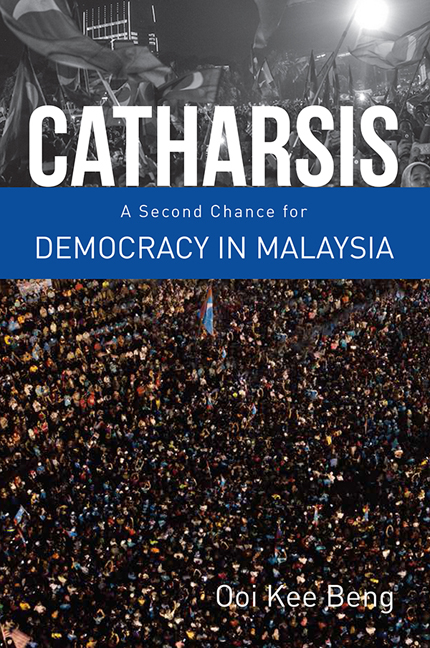Book contents
- Frontmatter
- Contents
- Foreword
- 1 Introduction – Malaysia's Future Is Redeemed
- Before Pakatan Harapan
- 2 After All These Years, Malaysia Is Still Held Hostage
- 3 Beyond the Nationalism Trap
- 4 Federating Malaysia — A Continuous and Troubled Process
- 5 Funeral for a True Son of Penang
- 6 Let's Work Out What Malaysia Is Good For
- 7 The Unity Fetish
- 8 When the National Narrative Loses the Script
- 9 Let's Be Cosmopolitan and Leave Multi-ethnicity Behind
- 10 Noses Don't Grow Back
- 11 Mahathir's Bersatu is Best Understood as an NGO
- Before 9 May 2018
- With Mahathir at the Helm
- Beyond 9 May 2018
- About the Author
2 - After All These Years, Malaysia Is Still Held Hostage
from Before Pakatan Harapan
Published online by Cambridge University Press: 12 February 2019
- Frontmatter
- Contents
- Foreword
- 1 Introduction – Malaysia's Future Is Redeemed
- Before Pakatan Harapan
- 2 After All These Years, Malaysia Is Still Held Hostage
- 3 Beyond the Nationalism Trap
- 4 Federating Malaysia — A Continuous and Troubled Process
- 5 Funeral for a True Son of Penang
- 6 Let's Work Out What Malaysia Is Good For
- 7 The Unity Fetish
- 8 When the National Narrative Loses the Script
- 9 Let's Be Cosmopolitan and Leave Multi-ethnicity Behind
- 10 Noses Don't Grow Back
- 11 Mahathir's Bersatu is Best Understood as an NGO
- Before 9 May 2018
- With Mahathir at the Helm
- Beyond 9 May 2018
- About the Author
Summary
In thinking about 2013, the year the Federation of Malaysia celebrates its fiftieth anniversary, one cannot but compare the national atmosphere to that in 2007, the year the Federation of Malaya celebrated its fiftieth anniversary.
I remember that the New Straits Times under Datuk Seri Kalimullah Hassan ran a week-long serialisation in January that year of my book The Reluctant Politician: Tun Dr Ismail and His Time(ISEAS, 2006) with the express purpose of putting the country into a contemplative mood and reminding Malaysians of what nation building is all about.
Given the faltering reform programme of then-Prime Minister Tun Abdullah Badawi, the year 2007 could not help but be a contemplative, and agitative, year for many Malaysians in any case. Be that as it may, to be fair to Abdullah, much change had come to the country after he took over from Tun Dr Mahathir Mohamad in October 2003.
Otherwise, the latter would not have been using his considerable political acumen back then to undermine his successor's position. Only Dr Mahathir's bad health that year limited his attacks on the prime minister.
Also noteworthy was how tame the UMNO general assembly was in 2007. Racial provocation was kept to a minimum amidst rumours that elections would soon be called. However, Malaysia's first astronaut, Sheikh Mustaphar Sheikh Abdul Shukor, presented the Jalur Gemilang that he had taken into space to Abdullah at the UMNO meeting, signifying that whatever success the trip into space had been, it was an UMNO achievement, not a national triumph.
Inter-religious tension was also building up with the destruction of Hindu temples and the controversial burials of supposed Muslim converts.
The mood in 2007 was therefore generally more confused than contemplative and it soon led to open political activism in Kuala Lumpur.
The first Bersih demonstration took place on 10 November to highlight the need for electoral reforms, which was followed two weeks later by the Hindraf rally to demand rights for Hindus.
Already on 26 September that year, about 2,000 lawyers and their supporters calling for proper investigations into allegations of inappropriate appointments of judges had marched to the residence of the prime minister.
Six eventful years, another two Bersih demonstrations and two exciting elections later, much has changed.
- Type
- Chapter
- Information
- CatharsisA Second Chance for Democracy in Malaysia, pp. 7 - 9Publisher: ISEAS–Yusof Ishak InstitutePrint publication year: 2018

